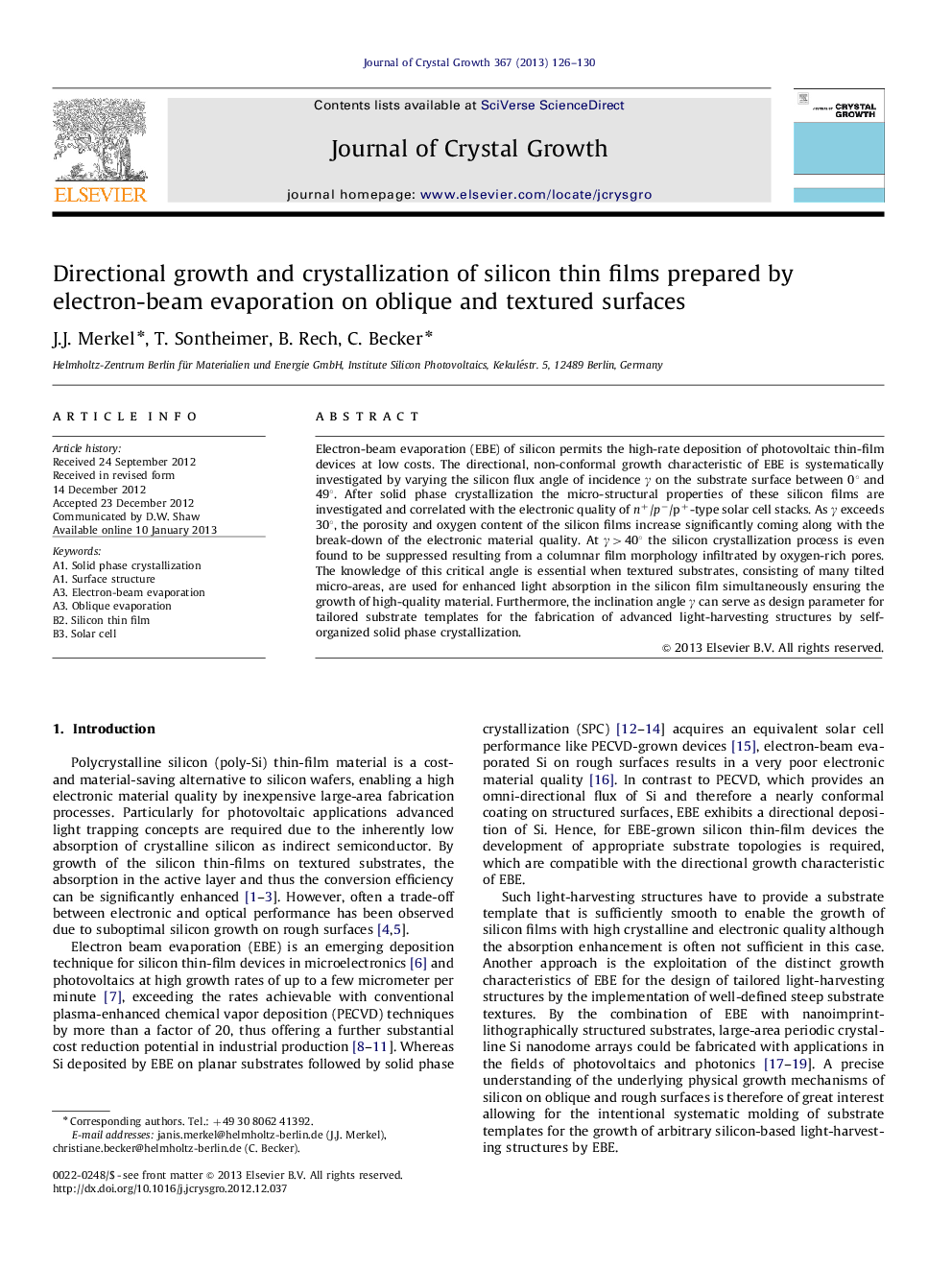| کد مقاله | کد نشریه | سال انتشار | مقاله انگلیسی | نسخه تمام متن |
|---|---|---|---|---|
| 1791222 | 1524462 | 2013 | 5 صفحه PDF | دانلود رایگان |

Electron-beam evaporation (EBE) of silicon permits the high-rate deposition of photovoltaic thin-film devices at low costs. The directional, non-conformal growth characteristic of EBE is systematically investigated by varying the silicon flux angle of incidence γ on the substrate surface between 0° and 49°. After solid phase crystallization the micro-structural properties of these silicon films are investigated and correlated with the electronic quality of n+/p−/p+-type solar cell stacks. As γ exceeds 30°, the porosity and oxygen content of the silicon films increase significantly coming along with the break-down of the electronic material quality. At γ>40° the silicon crystallization process is even found to be suppressed resulting from a columnar film morphology infiltrated by oxygen-rich pores. The knowledge of this critical angle is essential when textured substrates, consisting of many tilted micro-areas, are used for enhanced light absorption in the silicon film simultaneously ensuring the growth of high-quality material. Furthermore, the inclination angle γ can serve as design parameter for tailored substrate templates for the fabrication of advanced light-harvesting structures by self-organized solid phase crystallization.
► Si thin films were evaporated on inclined substrates and thermally crystallized.
► Structural and electronic Si film properties were systematically analyzed.
► Porosity and oxygen content of the Si films increased for inclination angles>30°.
► For inclination angles>40° the solid phase crystallization process was suppressed.
► Nanopatterned substrates enable the design of advanced Si light-trapping structures.
Journal: Journal of Crystal Growth - Volume 367, 15 March 2013, Pages 126–130